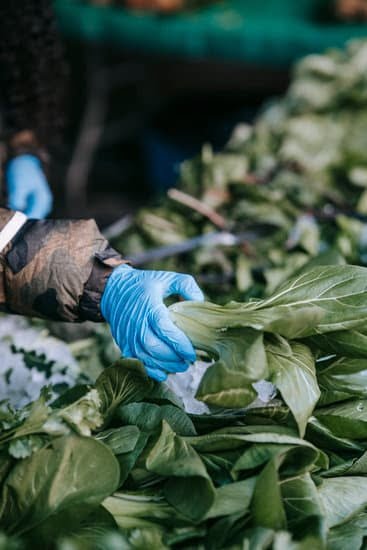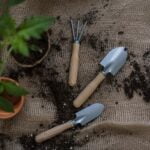Are you looking to make the most out of your limited outdoor space? Small garden layout design is the key to creating a beautiful and functional garden in a compact area.
From maximizing space with vertical gardening to choosing the right plants for your climate zone, there are numerous ways to create an organized and inviting small garden. In this article, we will explore the importance of a well-designed small garden layout and the benefits of having an organized and functional outdoor space.
When it comes to small gardens, every inch counts. Assessing your space is crucial for effective planning and design. From measuring your garden area to evaluating its shape, understanding your space is essential for creating a practical and aesthetically pleasing layout. By utilizing resources for measuring and planning, you can effectively make the most out of your limited outdoor space.
Inspirations for small garden design are endless, from container gardening to raised beds, each offering unique benefits and features. We will showcase various designs that are not only aesthetically pleasing but also maximize space efficiently. Choosing the right plants is equally important in a small garden layout as they can add beauty and depth while requiring minimal maintenance. By selecting low-maintenance, space-saving plants suitable for different climate zones, you can effortlessly enhance your small garden’s appeal.
Assessing Your Space
When it comes to designing a small garden layout, one of the first and most crucial steps is assessing the available space. Whether you have a tiny backyard, a balcony, or a rooftop terrace, understanding the size and shape of your garden area is essential for creating an effective design plan. Start by measuring the dimensions of your space and taking note of any existing features such as trees, buildings, or other structures that may impact your garden layout.
In addition to physical measurements, consider how you currently use the space and how you would like to use it in the future. Are you looking to create a cozy outdoor dining area, a tranquil oasis for relaxation, or a vibrant display of colorful blooms? Understanding your goals and envisioning how you want to utilize your small garden will guide your design decisions and help you make the most of the available space.
For those who are unsure about how to accurately measure their garden area or visualize potential layouts, there are various resources available to assist with this process. Online tools and apps can provide interactive planning options, while professional landscapers or gardening experts may offer consultations or services for personalized guidance in assessing and planning your small garden layout effectively.
| Measuring Tools | Useful Resources |
|---|---|
| Tape measure | Online planning tools |
| Laser distance measurer | Gardening consultations |
| Garden planner grid paper | Landscaping apps |
Small Garden Design Inspirations
When it comes to choosing the right small garden design inspirations, each option has its own set of benefits and unique features. Container gardening is particularly advantageous for those who want the flexibility to move their plants around their outdoor space.
Meanwhile, vertical gardening offers an opportunity to create lush green walls or focal points that draw the eye upwards. Raised beds are well-known for their ability to prevent soil compaction and offering better drainage than traditional in-ground gardens.
The key takeaway from exploring these small garden design inspirations is that there are plenty of creative options available for maximizing limited outdoor space. Each design offers its own unique set of advantages and can be tailored to suit individual preferences and needs. By understanding the benefits and features of each design inspiration, individuals can make informed decisions when planning their small garden layout.
| Small Garden Design Inspiration | Key Benefits |
|---|---|
| Container Gardening | Flexibility & Portability |
| Vertical Gardening | Maximizes Space & Adds Visual Interest | Raised Beds | Better Soil Drainage & Reduced Strain on Gardener |
Choosing the Right Plants
When it comes to designing a small garden layout, selecting the right plants is crucial for creating a visually appealing and functional space. Here are some important considerations when choosing plants for your small garden:
- Size: Opt for plants that will complement the size of your small garden, avoiding those that may overcrowd or overwhelm the space.
- Low-Maintenance: In a limited space, it’s important to choose low-maintenance plants that won’t require constant attention and care.
- Climate Suitability: Consider the climate in your area and choose plants that are suitable for the conditions, whether it’s hot and dry or cool and damp.
In addition, when selecting plants for a small garden, it’s beneficial to choose space-saving options such as:
- Herbs: Many herbs can thrive in small containers and provide not only visual interest but also practical use in cooking.
- Succulents: These low-maintenance plants come in a variety of shapes and sizes and are perfect for adding texture to a small garden design.
- Dwarf Varieties: Look for compact or dwarf versions of your favorite flowers or shrubs to fit well within the limited space of a small garden.
By carefully considering the size, maintenance needs, climate suitability, and space-saving qualities of different plant options, you can ensure that your small garden layout not only looks beautiful but also thrives with minimal upkeep.
Creating Focal Points
When designing a small garden layout, it’s important to consider how to add visual interest and focal points to the space. Focal points not only draw the eye into the garden but also create a sense of balance and harmony. Here are some tips for creating focal points in a small garden:
– **Consider Size and Scale**: In a small garden, it’s important to choose focal points that are proportionate to the size of the space. Overwhelming the garden with an overly large feature can make it feel cluttered, while a tiny object may get lost.
– **Use Color and Texture**: Adding pops of color or contrasting textures can draw attention to specific areas of the garden. This could be through vibrant flowers, colorful pottery, or unique foliage plants.
– **Incorporate Art or Ornaments**: Sculptures, water features, wind chimes, or other decorative elements can serve as focal points in a small garden. These items not only add visual interest but also reflect the gardener’s individual style.
By carefully selecting and placing focal points in a small garden layout, you can create a visually appealing space that feels thoughtfully designed and inviting. Consider incorporating these elements into your garden design to enhance its overall appeal and charm.
Utilizing Vertical Spaces
In a small garden layout, making the most of vertical spaces is crucial to maximizing the available area and creating a visually appealing environment. Whether your garden is limited in square footage or you simply want to add dimension and interest to your space, utilizing vertical spaces can provide an innovative solution.
Exploring Vertical Design Elements
There are a variety of vertical design elements that can be incorporated into a small garden layout. This includes trellises for climbing plants, hanging planters for flowers or herbs, and wall-mounted containers for small vegetables or succulents. These elements not only add visual interest but also effectively make use of otherwise unused space.
Maximizing Space and Creating Depth
By utilizing vertical spaces in your small garden design, you can create an illusion of depth and height within a limited area. This can be particularly useful in gardens with little ground space as it allows you to fully utilize the vertical dimension. Additionally, using tall plants or structures draws the eye upward, making the space feel larger and more dynamic.
Careful Planning and Implementation
When incorporating vertical elements into your small garden layout, it’s essential to consider factors such as weight load, sunlight exposure, and ease of maintenance. Proper planning and installation will ensure that these features not only enhance the aesthetic appeal but also function effectively within the space. Whether it’s installing a sturdy trellis or selecting the right hanging planters for your specific needs, careful consideration is key to successful implementation.
By exploring vertical design elements, maximizing space and creating depth through careful planning and implementation, utilizing vertical spaces can transform a small garden into a well-utilized and visually engaging outdoor oasis.
Maintenance and Care
The Importance of Regular Maintenance
Maintaining a small garden layout is essential for ensuring that it remains visually appealing and conducive to plant growth. Regular maintenance tasks such as weeding, pruning, and fertilizing are necessary to keep the garden in good condition. Weeds can quickly overtake a small space, so regular weeding is crucial to prevent them from competing with your plants for nutrients and sunlight. Pruning helps control the size and shape of plants, while fertilizing provides essential nutrients for healthy growth.
Guidelines for Watering and Fertilizing
Proper watering is essential for the health of your small garden. It’s important to water deeply but less frequently, as this encourages deep root growth. Consider investing in a soaker hose or drip irrigation system to deliver water directly to the roots, minimizing waste through evaporation and runoff. Additionally, choosing slow-release fertilizers can help provide a steady supply of nutrients to your plants without the risk of over-fertilization.
Pruning and Pest Control
Regular pruning helps maintain the shape and size of your plants while also promoting better air circulation. This reduces the risk of diseases and pest infestations. Keep an eye out for any signs of pests or diseases in your small garden layout and take appropriate action promptly. Integrated pest management techniques can help minimize the need for chemical pesticides, which can be harmful to beneficial insects and other wildlife in your garden.
Conclusion
In conclusion, designing a small garden layout is an essential aspect of creating a beautiful and functional outdoor space. By carefully assessing the available area, selecting the right plants, creating focal points, utilizing vertical spaces, and maintaining the garden regularly, individuals can make the most out of their limited outdoor space.
It is important to remember that a well-designed small garden can provide numerous benefits, including aesthetic appeal, relaxation, and even environmental advantages such as helping to reduce air pollution.
When it comes to small garden design, there are countless inspirations and ideas to explore. From container gardening to vertical gardening and raised beds, each design offers unique features and benefits that can be tailored to suit individual preferences and needs. By choosing the right plants for different climate zones and incorporating focal points like sculptures or water features, individuals are able to enhance their small garden’s visual appeal while also making the most of the available space.
In essence, small garden layout design offers a world of opportunities for creativity and personalization. Whether it’s through adding unique elements or maximizing vertical spaces with trellises or wall-mounted containers, individuals can truly make their small garden a reflection of their own style and personality. With careful planning and maintenance, a well-designed small garden has the potential to become a cherished oasis for relaxation and enjoyment.

Welcome to my gardening blog! I am passionate about plants and enjoy sharing my knowledge and experiences with others. In this blog, I will write about everything related to gardening, from tips on how to get started to updates on my own garden projects.





